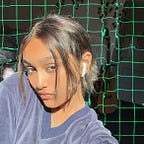At the Expense of Black Folks
In 2020, in response to the murders of George Floyd, Ahmaud Arbery and Breonna Taylor, massive protests erupted in the United States, as well as in numerous countries abroad. The Black Lives Matter organization and its respective hashtag #blacklivesmatter or #blm, for lack of a better phrase, blew up online. The movement sparked conversations about race, power and privilege and social media was one of the main avenues that people educated each other. I, personally, found out about BLM and any updates related to it on Instagram. The infographics I found on that app opened my mind to new ideas about issues around covert racism and microaggressions that I had never considered before.
Derald Wing Sue, a professor of psychology at Columbia University defined micro aggressions as such: “Microaggressions are the everyday slights, insults, indignities, put-downs and allegations that people of color experience in their day-to-day interactions with well-intentioned White [people].” I wouldn’t say that it is only White people who perpetrate these, though. As someone who comes from a deeply colorist society, I have witnessed firsthand how South Asian people, i.e. those originating from India, Pakistan, Bangladesh or Sri Lanka, also have a skewed idea of the relationship between race and success. This is why the Black Lives Matter Matter was so important. Asians had to come to terms with the fact that they had the “model minority” privilege. The model minority myth pits people of color against one another and creates a hierarchy in which Asian people are often represented at the top — this is because they are considered to be smart, wealthy, hard working, self reliant, etc.
Staying on the topic of the Black Lives Matter Movement, the article by Buzzfeed reporter Ikran Dahir reminded me of how harmful #BlackoutTuesday was. It completely flooded my feed with black squares instead of the informational posts I was used to. Suddenly there was radio silence, and the entire conversation around race and privilege had halted. I agree with Dahir that a day of silence is completely useless…why stop a conversation that has gained so much momentum? I was glad when the infographics and links to fundraisers started pouring in again. I think that having to constantly confront themselves with their privilege was a ground breaking moment for many Asians. Many of my friends and family expressed guilt about the way they had spoken about Black People in the past. Obviously, there was a degree of fatigue that everyone experienced because of constantly having to challenge themselves, but Instagram and other social media platforms truly contributed to a more educated society.
Although I had grown up in an environment where I had considered the detrimental nature of a racially charged society, I wasn’t perfect in any sense and definitely lacked political correctness. One of the first things I was made aware of from the Black Lives Matter infographics was the inappropriate use of AAVE (African-American Vernacular English) in Millennial and Gen-Z culture. I realized how damaging this was to Black people; on one hand non-Black folks code-switch to AAVE in order to be funny, but Black people are seen as uneducated and not smart when they use their own language. Even today, I catch myself using colloquial language originating from AAVE; this just goes to show how ingrained it is into my vocabulary. With the rise of TikTok over the last couple of years as well, this problem has only worsened. As a society, we need to engage in major shifts that not only address the seriousness of using AAVE as a pop cultural phenomenon, but also find new ways to communicate that don’t involve the appropriation of Black culture.
A double standard in our society that I found strange, but didn’t really consider the implications of, was White people’s desire of a darker skin color. For decades, White people have been invested in darkening their skin tone to achieve a “healthier” look. This trend has gone so far that White people have resorted to harmful tanning beds and self-tanners to appear darker. This is a gross epidemic as their White privilege does not disappear with their new skin tone. Despite these folks tanning till they are darker than many other Black and Brown people, they still benefit from a racialized society. In a world where a naturally darker skin tone is associated with a smorgasbord of negative connotations, it is an even harder hit for POC to see White people getting away with tanned skin and their privilege. And social media does not remedy this issue AT ALL. If anything, it contributes to the slogan of “tanned and beautiful”. Shockingly, as I wrote “tanned and beautiful”, the suggestion for the next word was “skin”. Offenses like these are so naturalized that even the algorithms have picked up on it. I saw a shift during the Black Lives Matter Movement, though. People switched from using “tanned and beautiful” to “dark and beautiful”. The slogan was also no longer attached to photos of tanned White people. I noticed that advertising companies, too, started using this phrase. I did wonder about performativity, though.
So, to conclude, the Black Lives Matter Movement of 2020 had deep personal implications for me, and also perhaps for a large percentage of the world. For the people I spoke to, Instagram served as a major platform for Black voices to be amplified. Most people agree that #BlackoutTuesday was unnecessary, and those who don’t regurgitate the argument that a day of rest is obligatory. My response to them is that Black People DO NOT GET A DAY OF REST. Racism doesn’t just stop to take a break on Tuesdays, so why should we? The last couple of years have contributed to a wake-up call for me, and any opportunity to learn about injustice is 100% worth it.
https://www.washingtonpost.com/business/2020/12/04/racial-microagressions-black-americans/
